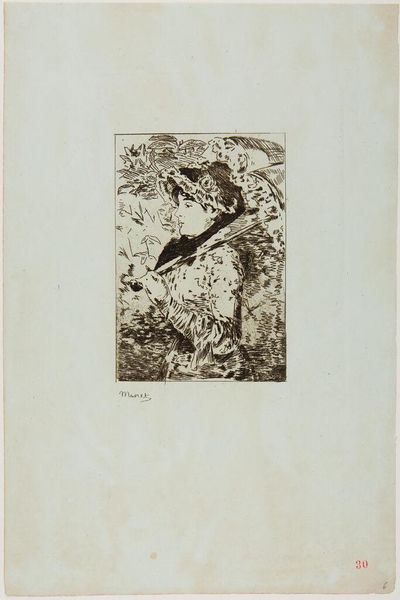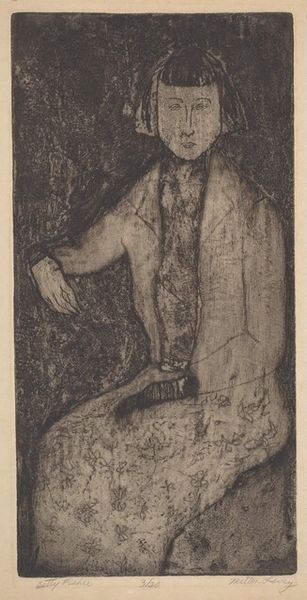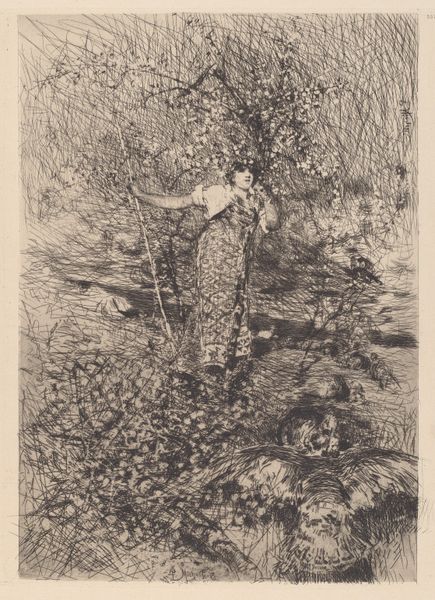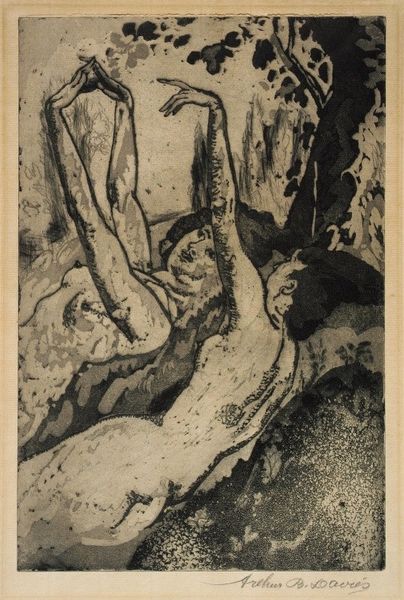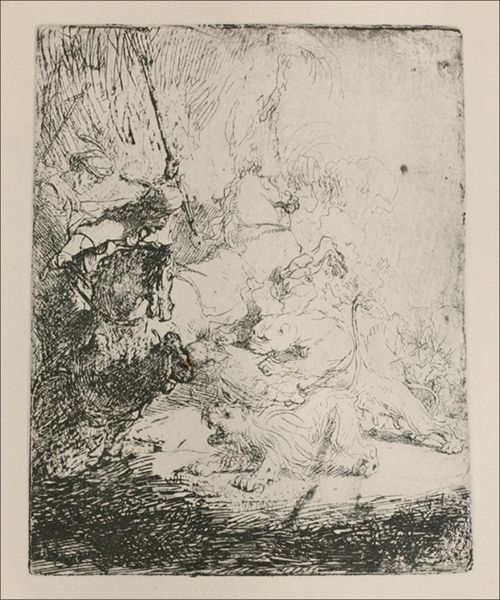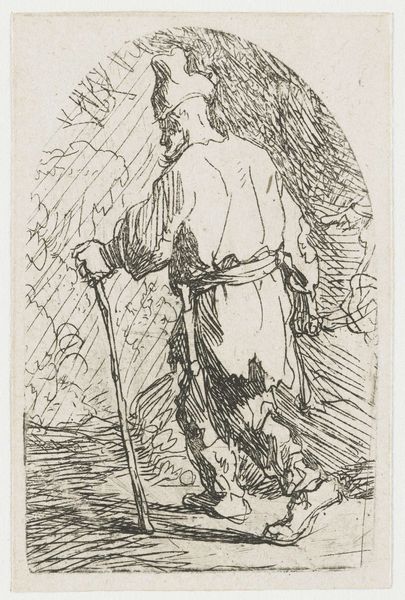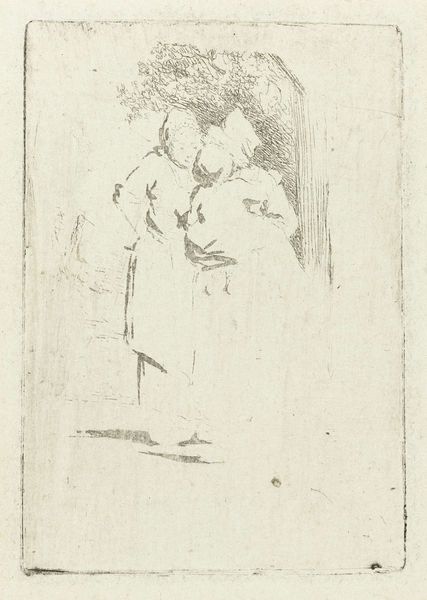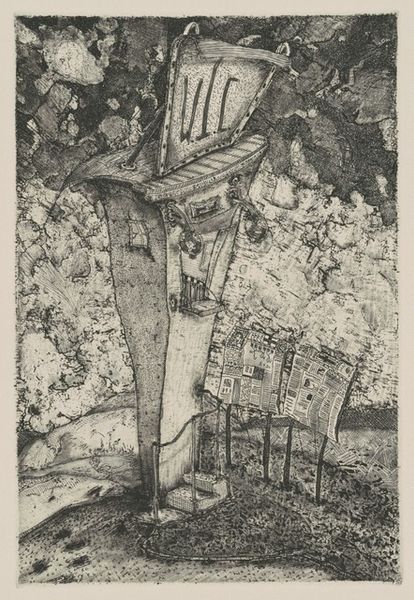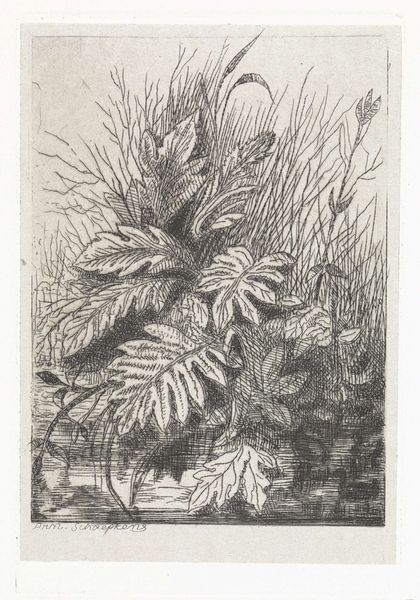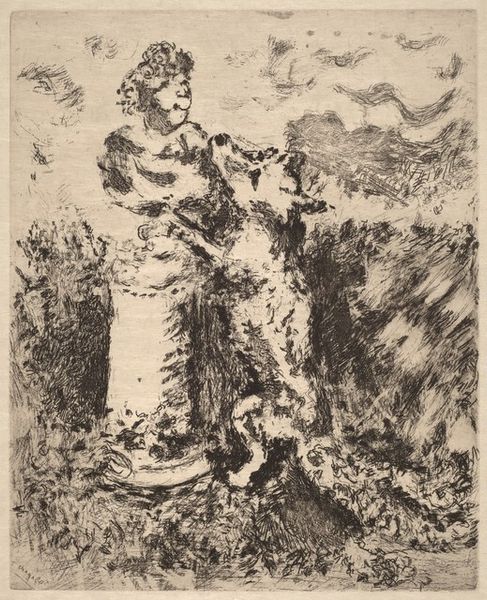
drawing, print, etching
#
portrait
#
drawing
# print
#
impressionism
#
etching
#
profile
Dimensions: Plate: 6 3/16 x 4 1/2 in. (15.7 x 11.4 cm) Sheet: 14 9/16 x 9 5/8in. (37 x 24.4cm)
Copyright: Public Domain
Curator: Édouard Manet created this etching, entitled "Jeanne (Spring)" in 1882. The work presents us with a portrait in profile. What are your initial thoughts? Editor: The textures immediately grab my attention—the hatched lines giving volume to the figure's dress and the dappled effect of the background vegetation. The economy of line is impressive for conveying such material detail with relatively simple means. Curator: Indeed. It's insightful to see how Manet, emerging from an epoch marked by traditional depictions of women, portrays Jeanne with agency and a distinct lack of romanticism, quite subversive for its time. The sitter appears to have a rather independent identity, distinct from earlier portraitures that reduced female figures to passive subjects or allegorical forms. This etching also emerged late in Manet's career. It's as if he seeks to capture fleeting moments, which has a parallel in many modern women navigating evolving social roles. Editor: That perspective reframes how I perceive her dress and accessories. They appear to denote a deliberate choice and reflection of bourgeois values of fashion and decorum but perhaps not as constraining symbols as one might assume. You mention this piece representing the Spring, so what do you read into this aspect? Curator: I would like to suggest reading it within broader themes of nature, renewal, and femininity. Nature offers women an alternative site of power and being. I want to add that Jeanne, here, can be understood as a figure who reclaims her body and personhood within a world changing rapidly in front of their eyes, not unlike the Impressionists themselves. The drawing echoes contemporary debates about visibility and representation and female self-determination within changing cultural spheres. Editor: Yes. When viewing it as an etching—essentially an industrial means of reproduction—there's an undeniable democratizing aspect too, both from the print's process and distribution possibilities to a depiction of the sitter among the masses of society rather than cloistered among nobility. The figure and form blur, not differentiating them necessarily but bringing them together in unison. That would reflect some degree of classlessness. The production itself adds a subtle dimension that enhances that reading. Curator: Agreed. This work makes clear a lot of things, not the least being how portraiture became democratized and modernized through prints and drawings. A radical shift that gave space for new representations of gender. Editor: Absolutely. Seeing it like that, it's remarkable how Manet anticipated those cultural shifts using the language of materials themselves, giving us both the representation and means to achieve them!
Comments
No comments
Be the first to comment and join the conversation on the ultimate creative platform.
